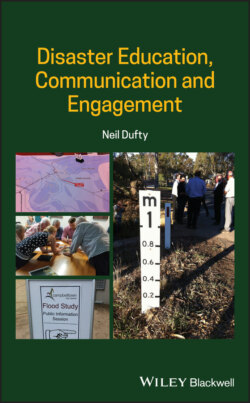Читать книгу Disaster Education, Communication and Engagement - Neil Dufty - Страница 26
2.3.5 Volunteered Geographic Information
ОглавлениеThe sharing and mapping of spatial data through voluntary information gathered by the general public is termed ‘volunteered geographic information’ (VGI). Using VGI and participatory mapping prior to disasters can involve the identification of the potential impacts to a community and vulnerable groups, and thus ‘hot spots’ of risk. However, according to Haworth et al. (2018), ‘this process may motivate residents to improve their level of preparedness, but may also provoke feelings of shame, guilt, or resentment toward those involved in the mapping’.
According to Klonner et al. (2016), research so far has emphasised the role of VGI in disaster response. The presence of both researchers and volunteers is concentrated in response to crises, as opposed to during mitigation or preparedness activities, likely related to response being more visible and prominent, especially in the media (Haworth 2016).
The crisis map is a real-time gathering, display, and analysis of data (political, social, and environmental) during a crisis. Crisis mapping allows a large number of people to control, even at a distance, response actions by providing information to manage them. According to Meier (2011), ‘Crisis-mapping can be described as a combination of three components: information collection, visualization, and analysis. All of them are incorporated in a dynamic, interactive map.’
Specific apps, social media, participatory mapping tools, local language materials, and training programmes, as well as working closely with local partners, can help increase programme outreach and strengthen stakeholder engagement (Gunawan 2013).
A well-documented example of crisis mapping is the global volunteer mapping effort which assisted the humanitarian response to the 2010 Haiti earthquake (Meier 2012).
